On Monday, October 15th, Nick and Marcus put SCINI together. It may look like giant lego pieces, but all the cables have to line up and connect, and everything has to end up waterproof!
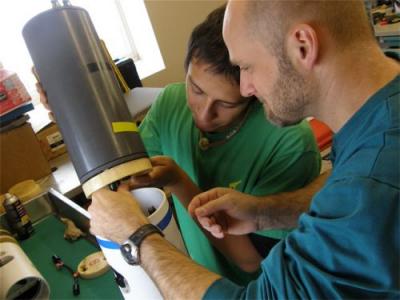
Nick (left) and Marcus connecting the cables on SCINI
After several hours, and a few times of having to redo connections, SCINI was ready to get strapped together.
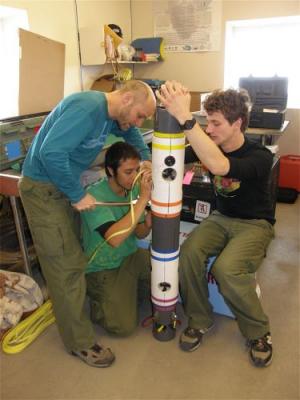
Marcus, Nick, and Bryan strap SCINI together
The computers to run SCINI and the Elphel camera were then set up and everything was taken out to the aquarium for the first SCINI dive in Antarctica!
SCINI is a tethered submersible; notice the yellow power cord attached to it. Besides power, the cord carries computer code to run the commands for SCINI to maneuver, and video signals return to the monitor along the cable.
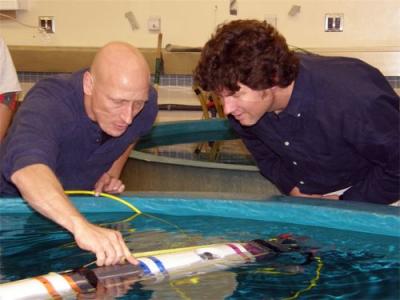
Bob explains some of SCINI's unique features to Tom Wagner
The SCINI team was happy to share their success with folks coming down to the aquarium to watch SCINI in action. Tom Wagner is the science representative for the National Science Foundation in Antarctica.
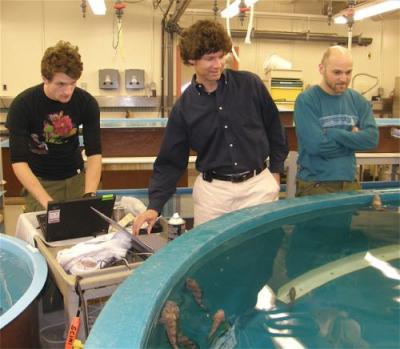
Bryan (left) monitors the Elphel camera, Tom (center) is on the joystick controls, and Marcus (right) watches SCINI chase the fish
We got so excited by SCINI's maneuverability that we decided to take advantage of the 24-hour daylight and take SCINI down to the jetty dive hut for a night-dive after dinner.
Joe and Thomas, using GPS instrumentation, are helping us locate three holes for our navigation system. SCINI will use a sonar triangulation system for underwater location. I'll explain how that works in a later journal.
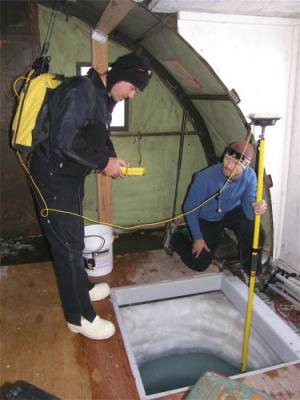
Joe and Thomas georeference the dive hole
Joe and Thomas, aka "ghostbusters", are determining the exact position (within centimeters) of the jetty dive hole. They also georeferenced two more holes on the ice for our triangulation system. Joe and Thomas work for UNAVCO, University Navstar Consortium, and they help a lot of different science teams here with locational information.
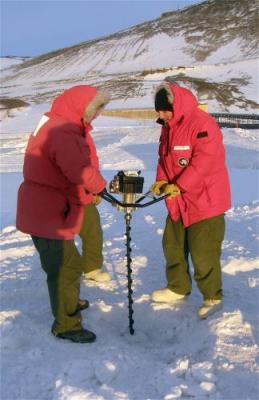
Drilling holes for the transducers
Once the correct positions were identified, we drilled two-inch holes with the "Badger" drill. It isn't easy! You have to push hard to drill through the ice, and then add more flights by unbolting the first flight from the Badger drillhead and bolting on a second flight with either cold hands or unmaneuverable gloves. When you drop the bolt or the nut you have to find it in the snow. It took hours before the two extra holes we needed were finished and we could lower in the transducers.
Meanwhile, back at the dive hut, they had submerged SCINI into the sea!
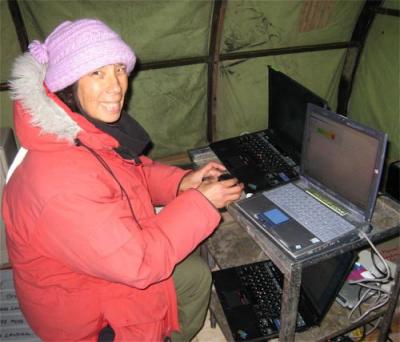
Stacy "flying" SCINI underwater from the relative warmth of the dive hut.
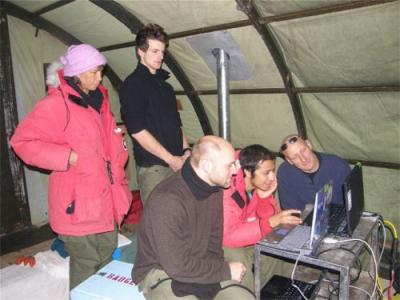
The SCINI team watches the video monitor and sees the seafloor through SCINI's eyes!
It was an exciting night that lasted until 2 am! While I crashed at midnight, the rest of the team stayed up to troubleshoot the navigation system and then to try and extract one of the transducers that froze into its hole. We'll save that story for the next journal entry!

